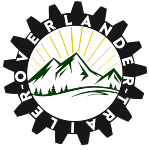Designing water lines for a DIY camper involves careful planning to ensure a functional and reliable water supply system. Here’s a step-by-step guide to help you design water lines for your camper:
- Plan Your Layout:
- Determine where you want your water sources (sinks, showers, toilets) and appliances (water heater, pump) to be located in the camper. Consider the most efficient plumbing routes.
- Choose Water Lines and Fittings:
- Select appropriate water lines based on your needs. PEX (cross-linked polyethylene) tubing is a popular choice due to its flexibility, durability, and resistance to freezing. Choose fittings compatible with your chosen tubing.
- Gather Tools and Supplies:
- Gather the tools you’ll need for the installation, including a PEX cutter, crimping tool, pipe insulation, pipe straps, and a tubing bender if needed.
- Install Water Pump:
- Install the water pump near the water source. Connect the pump to the camper’s electrical system and ensure it’s securely mounted.
- Water Tank Connection:
- If using a built-in water tank, connect the water lines from the pump to the tank’s outlet. Use appropriate fittings and ensure a secure connection.
- Plan Routes and Runs:
- Plan the routes for your water lines, avoiding areas with excessive heat or potential damage. Keep lines away from sources of heat, like exhaust pipes or electrical components.
- Cut and Assemble Lines:
- Cut PEX tubing to the required lengths, ensuring accurate measurements. Use a PEX cutter for clean cuts.
- Attach Fittings:
- Attach PEX fittings to the ends of the tubing using a crimping tool. Follow the manufacturer’s instructions for proper crimping technique.
- Route Water Lines:
- Securely attach the water lines to the camper’s structure using pipe straps or other appropriate fasteners. Ensure lines are protected from sharp edges and potential wear.
- Install Faucets and Fixtures:
- Install faucets, showerheads, and other fixtures according to the manufacturer’s instructions. Connect the water lines to the fixtures using PEX fittings.
- Insulate Lines:
- If you’re camping in cold weather, consider insulating your water lines to prevent freezing. Use pipe insulation or heat tape to protect the lines.
- Pressure Test:
- Before sealing up walls and cabinetry, conduct a pressure test on the water system. Pressurize the system and check for any leaks. Fix any leaks before proceeding.
- Install Water Heater (if applicable):
- If you’re using a water heater, follow the manufacturer’s instructions for installation. Connect the water lines to the heater using appropriate fittings.
- Install Drainage:
- Design drainage systems for sinks, showers, and any other water fixtures. Ensure proper slope for efficient drainage and connect drains to a gray water tank or disposal system.
- Final Check:
- Double-check all connections, fittings, and fixtures for leaks or issues. Run water through the system to verify its functionality.
- Cover and Insulate:
- Once you’re satisfied with the water lines, cover them with appropriate panels, cabinetry, or insulation, depending on your camper’s design.
Remember to consult plumbing codes and regulations applicable to your area when designing and installing water lines. Proper planning and execution will result in a well-functioning water supply system for your DIY camper. If you’re unsure about any step, consider consulting a professional plumber or someone experienced in camper plumbing.

Neuroquiet
Mitolyn
Nagano Lean Body Tonic
Leanbiome review
ProvaDent
LeanBiome review
LeanBiome review
LeanBiome
Lottery Defeater
Boostaro review
Mitolyn review
Tonic greens review
Tonic greens
Quietum plus
Nagano Lean Body Tonic
Nagano Lean Body Tonic
Nagano Lean Body Tonic
Mitolyn
Mytolyn review
Billionaire Brain Wave
Mitolyn review
Alpha Bites Review
Lottery Defeater Review
Lottery Defeater Review
Boostaro
Pronerve6
Billionaire Brain Wave
Billionaire Brain Wave
Herpafend
Mitolyn
Java burn review
Mitolyn
Mitolyn review
Tea Burn
Mitolyn
Sight Care review
Lottery Defeater review
Leanbiome
Prodentim
Prodentim review
Boostaro review
Lottery defeater
Lottery defeater
Leanbiome review
Quietum Plus
ZenCortex review
Quietum Plus
TonicGreens
Provadent
Tonic Greens
TonicGreens
Tonic Greens review
Lottery Defeater
Lean Body Tonic reivew
GlucoPure
Neuroquiet
Neuroquiet review
Java burn review
Mitolyn
Leanbiome review
ProDentim review
Boostaro review
Boostaro
THE MONEY WAVE REVIEW
Lottery defeater review
Nerve fresh
Leanbiome review
Mitolyn review
Zencortex
NATURAL MOUNJARO RECIPE
Zencortex review
Zencortex
Sight care
Sight care review
NANODEFENSE PRO REVIEW
NANODEFENSE PRO
Natural Mounjaro
NATURAL MOUNJARO RECIPE
Tonic Greens
Sight care review
Prodentim
Leanbiome
Lottery Defeater Review
TURMERIC TRICK
Mitolyn
NATURAL MOUNJARO RECIPE
Tonic Greens review
Sight care
Sight care review
Tonic Greens
Mitolyn review
Lottery defeater
Lottery defeater review
Boostaro
Natural Mounjaro recipe
Natural Mounjaro recipe
Sight care
Java Burn
Prodentim
Prodentim review
Leanbiome review
Leanbiome review
Prodentim
Zencortex
Boostaro review
Sight care
Sight care
Nagano Lean Body Tonic
Lottery Defeater
NeuroQuiet
Quietum Plus
Leanbiome
AquaSculpt
Aqua Sculpt review
Gluco Extend review
Primebiome
NATURAL MOUNJARO RECIPE
Gluco Tonic
Gluco Tonic
Sight care review
Vertigenics review
Appanail
Prodentim
Zencortex review
Denticore review
Nerve fresh
Moringa magic review
Boostaro
Lottery defeater review
Prodentim
Prodentim review
Gluco6 review
Prodentim review
Quietum plus review
LeanBiome
Prodentim review
Prodentim review
Prodentim review
Lotto Champ
Lotto champ review
Prodentim
Appanail
SALT TRICK FOR MEN
Quietum plus review
Zen cortex
Nitric Boost
herpafend
NERVEFRESH
Boostaro
Lottery defeater
Gumaktiv